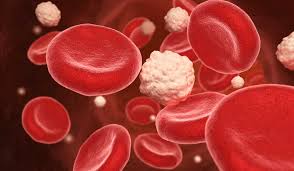Source: medwirenews.com
medwireNews: An oral glucose tolerance test (OGTT) may identify youths with a more adverse cardiometabolic profile than a fasting plasma glucose (FPG) test does, say researchers.
Ming Li (Peking Union Medical College Hospital, Beijing, China) and colleagues found “surprisingly poor agreement between FPG and OGTT in the classification of pre-diabetes and diabetes when compared with previous reports in older adults.”
The team studied 542 participants of the Beijing Child and Adolescent Metabolic Syndrome study, who were aged 14–28 years and had at least one metabolic syndrome component. Of these, 10.0% had prediabetes according to at least one of FPG and OGTT, and 1.9% had type 2 diabetes.
However, they found that FPG failed to identify six of the 10 type 2 diabetes cases identified with an OGTT, as well as 32 of the 33 prediabetes cases. Conversely, the OGTT missed 21 of the 26 people who had impaired fasting glucose.
This is consistent with a study in obese Italian youth, say Li and team, and suggests that “FPG is inadequate as a screen for the pre-diabetes phenotype” in the presence of metabolic syndrome factors.
But the OGTT results identified a subgroup of young people with a more adverse cardiometabolic profile, as evidenced by the fact that 46.9% had metabolic syndrome, having at least three of its components, namely overweight/obesity, dysglycemia, raised blood pressure, elevated triglycerides, or low levels of high-density lipoprotein cholesterol. By contrast, metabolic syndrome rates were 14.3% among those with isolated impaired FPG and 7.5% among those with normal glucose tolerance.
Youth with isolated impaired glucose tolerance also had the highest prevalence of moderate-to-severe non-alcoholic fatty liver disease, at corresponding rates of 28.1%, 14.3%, and 9.0%.
Participants with impaired FPG had the highest insulin resistance according to HOMA-IR, which the researchers say “mainly reflects hepatic” insulin resistance, whereas those with impaired glucose tolerance scored lowest on the insulin sensitivity index, which “reflects both hepatic and peripheral (ie, muscle) insulin sensitivity.”
Beta-cell function as measured by HOMA-β was most aberrant in the impaired FPG group, but the impaired glucose tolerance group had the worst function as indicated by the insulinogenic index (reflecting early-phase insulin secretion) and by the oral disposition index.
This led the researchers to conclude that impaired glucose tolerance “was more indicative than [impaired fasting glucose] of profound [insulin resistance], β-cell dysfunction and an adverse cardiometabolic profile.”
They believe therefore that among young Chinese people, rather than an FPG test, “a 2-hour OGTT is necessary to adequately identify pre-diabetes in the subset of subjects with risk factors for [metabolic syndrome], even in the absence of obesity.”
